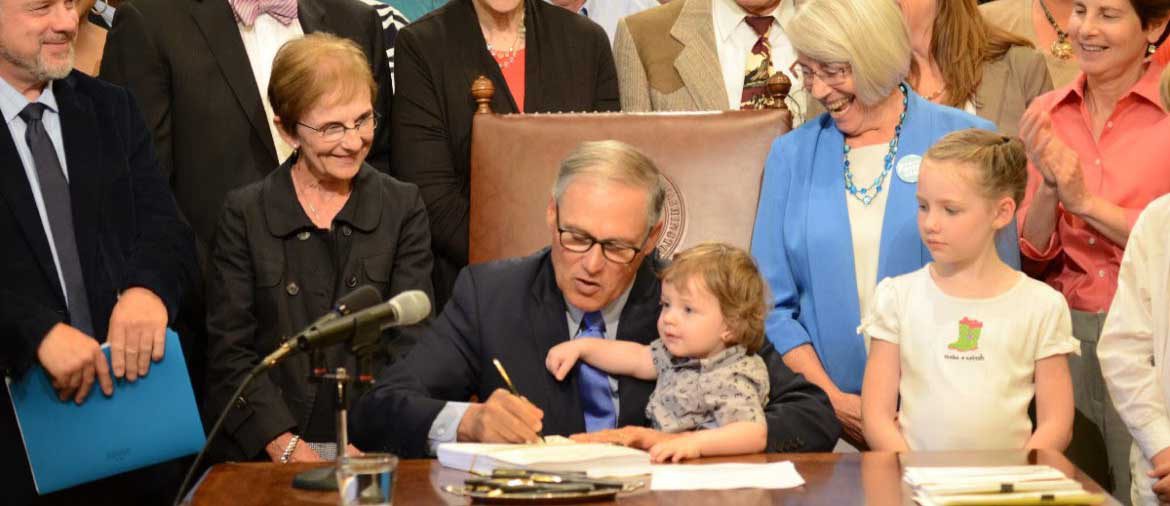How much does the government spend on foster care?
by ALLEGRA ABRAMO of INVESTIGATEWEST
Children and families caught in the state’s beleaguered child welfare system have some significant good news to celebrate this week as the state, with millions of extra dollars just appropriated by legislators, launches a major restructuring of the system.
Lawmakers this year passed a half-dozen new laws and millions in funding to reform child welfare programs, better support foster parents, lower social worker caseloads, and help foster youth get drivers licenses and access to lawyers, among other efforts.
The most far-reaching of these bills, HB 1661, consolidates child protection, early learning and juvenile justice programs under a new Department of Children, Youth and Families. The new, more prevention-focused agency aims to help families before children are removed due to neglect or abuse, and before youth get into trouble with the law. The bill passed June 30 with broad bipartisan support.
“It was a great session for kids and families,” said Rep. Ruth Kagi, a Seattle Democrat who chairs the House Early Learning and Human Services Committee and was a prime sponsor of HB 1661. When she and child welfare advocates went to Olympia in January, they had instead expected that the debate over school funding would drown out other priorities.
I was just so pleased when it all came together, and very pleasantly surprised because I thought they were going to have to take deep, deep cuts in human services, and they didn’t.Rep. Ruth Kagi
The state’s foster care system, now run by the Children’s Administration, faces a crisis-level shortage of foster homes, as shown by a series of reports by InvestigateWest in partnership with Crosscut and KCTS 9. Kagi, the legislator who has campaigned most extensively to help foster children over the last decade, credited that reporting as critical to the success of her cause this year.
Observers say the crisis in foster care is driven largely by the Legislature’s chronic under-funding of the Children’s Administration. Stagnant salaries, cuts to services for the most troubled foster children and reduced supports for struggling foster parents have contributed to an exodus of foster parents and case workers.
Launching a new ship
Now it will be the job of the new secretary of the Department of Children, Youth and Families, Ross Hunter, to fix the state’s ailing child welfare system. Gov. Jay Inslee appointed Hunter, who until now led the Department of Early Learning, at last Thursday’s bill signing.
One of Hunter’s first tasks is to plan for integrating his old department with the Children’s Administration and the Juvenile Rehabilitation Administration, both now inside the Department of Social and Health Services, starting next July.
Lawmakers sought to build greater accountability into the new department’s design. An Office of Innovation, Alignment and Accountability will make research-based recommendations, evaluate services and monitor reforms, among other functions.
How much does the government spend on foster care?
The office also must recommend ways to improve the system for addressing foster parent complaints. Foster parents say they now feel ignored and their complaints are often met with hostility from agency workers.
How much does the government spend on foster care?
The law lays out a number of specific measures the department must track, including reducing children’s length of stay in foster care, increasing stability and the number of children who return to their birth families, and improving consultation with foster parents. The department must make data on these metrics publicly available by the end of 2018.
But don’t expect to see changes overnight, advocates say. “This is a 10- to 15-year fix,” said Mike Canfield, a longtime foster parent and the executive director of the Foster Parents Association of Washington. “It’s like launching a ship in the right direction, and what we have to avoid is people falling into complacency.”
Giving foster parents a break
Foster parents also have reason to cheer a bill that came out of the Senate. SB 5890 will provide short-term, in-home help to foster parents who need a break for a few hours. One of foster parents’ biggest complaints is that they feel unsupported, especially in recent years as social worker caseloads have swelled and the state eliminated other staff whose sole job was helping foster parents.
How much does the government spend on foster care?
Sen. Steve O’Ban, the Republican from University Place who chairs the Senate Human Services, Mental Health and Housing Committee, sponsored the bill after conversations with foster parents.
To boost the number of foster homes, the far-ranging SB 5890 requires the state to create an expedited relicensing process for foster parents who allowed their licenses to expire in the past five years. Until now, former foster parents had to start the whole process over again and repeat lengthy trainings, which could take up to a year. The expedited process is supposed to take only four months.
How much does the government spend on foster care?
The bill’s other provisions include creating a panel that will review the cases of foster children who have not found permanent homes within 18 months, and encouraging adoption of teenagers by upping the support payments adoptive parents can get from the state. And all family members who foster related children will now be eligible to receive cash assistance to care for them, removing a barrier for many older caregivers with fixed incomes.
“These are all little efforts to plug holes in the system,” Canfield said.

